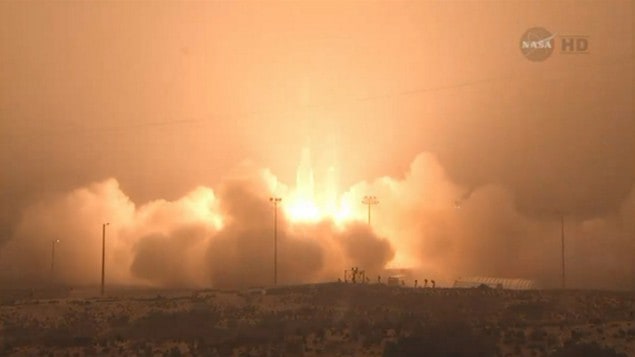
NASA has successfully launched a mission to measure carbon-dioxide (CO2) levels in the Earth’s atmosphere in unprecedented detail. The $465m Orbiting Carbon Observatory (OCO-2) was launched today at 09:56 GMT on a Delta 2 rocket from Vandenberg Air Force Base in California. OCO-2 will now be put in an orbit around the Earth at an altitude of 705 km, where its instruments will be calibrated before being put into full use.
OCO-2 is a reincarnation of the $270m Orbiting Carbon Observatory (OCO), which crashed in the Pacific Ocean near Antarctica on 24 February 2009 shortly after take-off, following a rocket malfunction. In late 2009 the US government decided to build an identical mission, which was scheduled for launch in February 2013.
However, when the $424m Glory satellite, which would have studied how the Sun and aerosols in our atmosphere affect the Earth’s climate, also failed in a similar manner to OCO after launch on 4 March 2011, NASA officials delayed the launch of OCO-2. NASA also decided to launch OCO-2 using a bigger Delta 2 rocket – rather than the Taurus rocket that was used for OCO and Glory’s launch – which added to the cost of launching the new mission.
“The launch of OCO-2 will not only allow many of us who worked on the original OCO mission to complete unfinished business, but to take the next step in an important journey to understanding our home planet,” OCO-2 project manager Ralph Basilio from NASA’s Jet Propulsion Laboratory in California told physicsworld.com.
Joining the A-train
OCO-2, which weighs 454 kg, is NASA’s first spacecraft that is dedicated to making space-based observations of atmospheric carbon dioxide. OCO-2 carries a single instrument that it will use to produce “concentration maps” of carbon sources and sink throughout the world. As sunlight is reflected from the Earth’s surface, gases such as CO2 and oxygen absorb this light at specific wavelengths. OCO-2 contains three spectrometers tuned to detect changes in the intensity of this absorption.
“OCO-2 will deliver on the promises made on the original OCO mission – to obtain space-based measurements of carbon dioxide with the precision, resolution and coverage to improve our understanding of the carbon cycle and climate-change process,” says Basilio.
OCO-2 now joins the “A-train”, a set of six Earth-observing satellites that are already in orbit. These include the CALIPSO and Cloudsat satellites looking at the levels of aerosols in the Earth’s atmosphere and monitoring cloud formation, which were both launched in April 2006.



